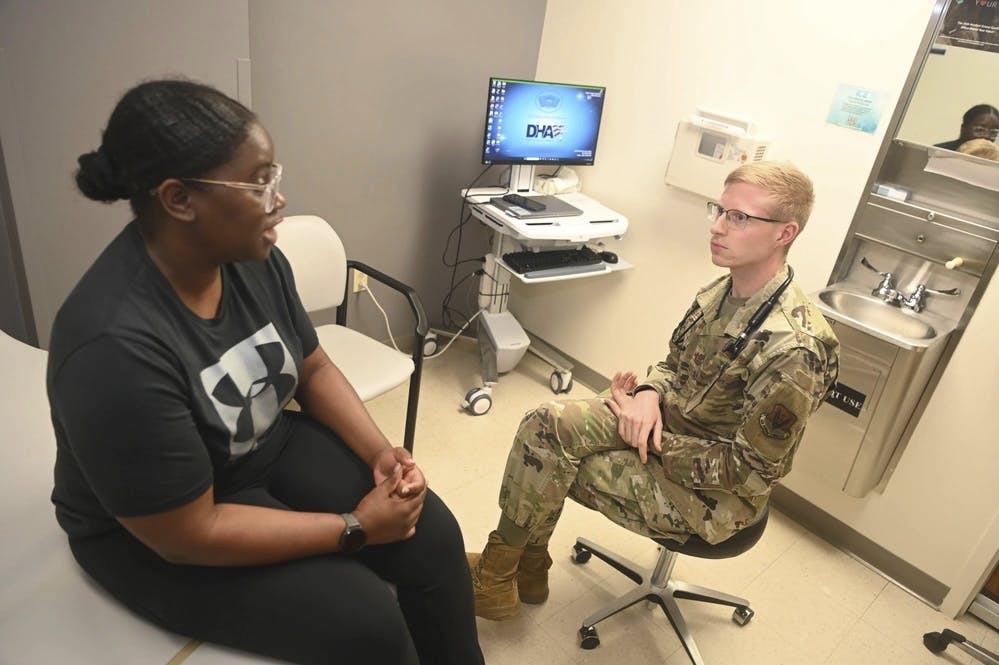How Tech Can Help Curb Maternal Mortality For Health Equity
Federal leaders are calling for increased attention to digital tools for reducing maternal deaths.

Federal and industry leaders are honing in on curbing maternal mortality rates amid efforts to improve equity in government services and further improve disparities in health care.
“Technology can be used to improve the access to health care so it can bridge that gap or any geographical barrier where a family cannot go to a doctor,” Avishek Choudhury, assistant professor at West Virginia University, told GovCIO Media & Research.
Maternal mortality rates in the U.S. are one of the highest in the world, though research says that more than 80% of pregnancy related deaths are preventable.
“People love us when we’re pregnant. And then we’re discharged, and we’re often left on our own. And we know that this is the most critical component where most maternal deaths are happening,” said Natalie Hernandez, executive director at the Center for Maternal Health Equity at Morehouse School of Medicine, said at a Washington Post event June 29.
For women of color, pregnancy-related deaths are three times more likely than white women, according to the Centers for Disease Control and Prevention.
“Disparities in health care are wide-ranging and can include access, quality and outcomes. Minorities are one group directly and indirectly impacted through a legacy of inequities within the health care space,” Jonathan Cherry, senior director of research operations at the March of Dimes, told GovCIO Media & Research.
Emerging technology has potential to help. Artificial intelligence can be used in predictive analytics and help the doctors who serve women who are carrying children — as long as people understand how to use the tech.
“We are assuming that community or that user has the technology, has internet connection, has electricity, and has the minimum health literacy or digital literacy to use these technologies. So if we assume all of these are present then AI can definitely help. If not, then this technology can add to the digital divide, worsening the situation,” Choudhury said.
Technology’s impact within these issues are gaining attention from Congress. Senators Bob Menendez and Dan Sullivan reintroduced legislation calling for more investment in telehealth and digital tools based on a Centers for Medicare and Medicaid Services (CMS) recommendation for expanding remote patient monitoring and promoting virtual training and capacity.
The Tech to Saves Moms Act “recognizes the transformative potential of technology to reduce maternal mortality and address racial disparities in maternal health outcomes. By investing in telehealth and digital tools, we can overcome barriers to care, combat implicit biases and ensure that all mothers, regardless of their location or background, have access to quality health care,” Sen. Cory Booker said in a statement.
Equity in Maternal Health
The extent of maternal mortality spreads far and wide. According to the CDC, Black infants are more than twice as likely to die before their first birthdays compared to white infants. In addition, women of color are up to 50% more likely to give birth prematurely.
“This crisis is about moms who die and those who nearly did. It’s the loss of pregnancies, and newborn babies and infants. It’s prematurity and maternal care deserts, and the social determinants of health — like quality education, housing, whether people are able to put nutritious food on the table,” Cherry said.
In January, the March of Dimes launched the March of Dimes Research Center for Advancing Maternal Health Equity, a center that will focus on combating health inequities in maternal health through research and technological development.
“The latest key health indicators show the U.S. has not moved the needle on maternal health and equity and, in fact, things are getting worse,” said March of Dimes Board of Trustees Chair Sharon Mills Higgins, in a press release in January.
In order to avoid accessibility challenges for those in underserved communities, Chounhury said technology should be developed with one’s cultural environment in mind.
“Do they need to have a smartphone? Do they need to have a desktop computer? Do they need to have a 5G internet connection to use that technology? If so, then do they have that?” Choudhury added.
While technology can help decrease maternal mortality, experts said it is not the only answer.
“Technology isn’t a panacea for the systemic problems that lead to health inequities,” Cherry said. “Unwinding a legacy of inequity won’t happen overnight, but it also won’t happen if we don’t take action now.”
This is a carousel with manually rotating slides. Use Next and Previous buttons to navigate or jump to a slide with the slide dots
-

VA CIO Targets Modern IT and Smarter Workforce Alignment
Agency leaders told lawmakers they are focused on trimming legacy systems and restructuring its workforce to streamline operations.
3m read -

Trump Executive Order Boosts HBCUs Role in Building Federal Tech Workforce
The executive order empowers HBCUs to develop tech talent pipelines and expand access to federal workforce opportunities.
3m read -

IHS Prepares to Deploy PATH EHR at Pilot Sites in 2026
IHS targets PATH EHR pilot in 2026, emphasizing governance, collaboration and interoperability as key pillars of the modernization strategy.
4m read -

FEHRM CTO Targets Two-Year Cloud Migration for Federal EHR
Lance Scott touts new EHR tech advancements, including cloud migration, expanded data exchange and AI integration to improve care delivery.
4m read -

VHA’s AI Chief Led NIH’s New AI RFI
The agency's AI chief Gil Alterovitz helped develop a plan that hints at how NIH is charting the future of AI and biomedical research.
5m read -

Trump Taps Maj. Gen. John Bartrum to Lead VHA
Nominated for VA's top health role, Bartrum brings over four decades of military and public service to the agency.
3m read -

AI Growing in Focus Amid HHS Restructure
Department of Health and Human Services officials see promise in artificial intelligence amid efficiency goals.
4m read -

Federal EHR Leaders Eye Ambient Dictation, Interoperability
Officials from DOD and VA said they are exploring new EHR features such as functionality in offline status and interoperability.
5m read -

Federal Agencies Tout Tech in President Trump’s First 100 Days
Defense modernization and health care restructuring landed among some of the key IT highlights within the president's first few months.
6m read -

VA Secretary Tells Congress Tech Efficiencies Will Help Offset Workforce Reductions
Technology improvements will help allow department to maintain veteran care, VA leadership tells Senate Veterans Affairs Committee.
-

NCI Uses Wearables Data to Link Exercise to Cancer Risk
NCI finds a connection between low-intensity exercise and decreased risk of cancer through data collected from wearable technology.
9m listen -

NCI's Tech-Based Therapy Helps Patients Battle HPV-Linked Respiratory Disease
A new tech-based therapy is helping NCI treat patients who suffer from a respiratory illness associated with HPV.
23m listen
















